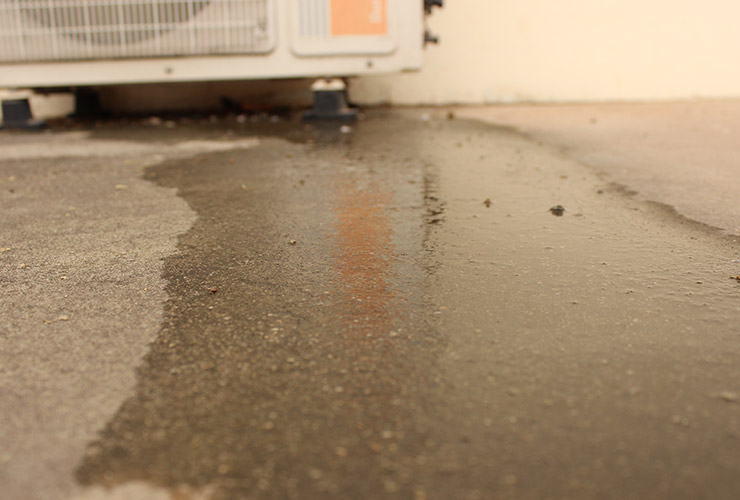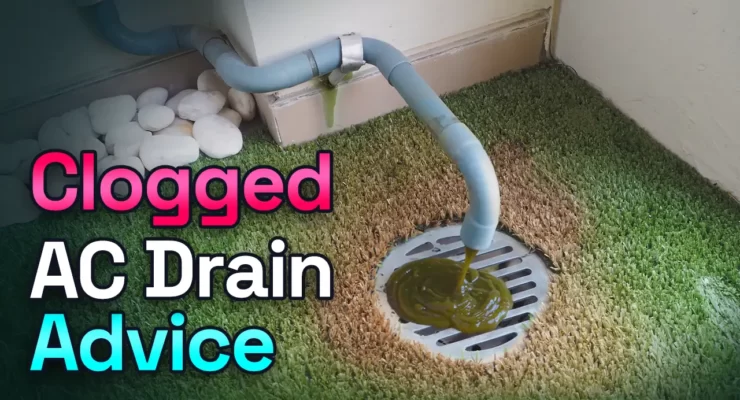Fast read
If your air conditioner's drain line is clogged, it can lead to water leakage, mould and other damage.
DIY remedies include identifying the problem, turning off the power, locating and accessing the drain line, clearing the clog with methods like flushing, and cleaning with a bleach solution. Testing the system afterwards ensures proper drainage.
If issues persist, seeking professional help is advised. Preventative measures can mitigate future blockages
How should you handle a clog in the drain line of your air conditioner?
The drain line facilitates the removal of excess moisture, allowing condensation from the air condenser and condensate pan to drain from the air conditioner. Over time, the drain line may become clogged with dirt or debris, or develop mould and algae, leading to blockages in the drain pipe.
This issue may allow the condenser drain pan to overflow and leak. This can evidently lead to issues with water leakage, reduced cooling efficiency, and potential long-term damage to the unit. Clogging in your air conditioner’s drain line can result in water leakage and potential damage.
What can be done DIY?
At Your Energy Answers, it’s best to call a trained technician to fix air conditioners.
First, check if the air filter is dirty, if it is, clean or replace it. Next, clean the coils gently using soap and water. Look for anything blocking the drain line and clear it out. Make sure the thermostat is set right and replace its batteries if needed.
Check the circuit breakers to see if any are off, if they are, switch them back on. Inspect the ducts for any problems and fix them.
Remember, if it seems complicated, it’s safer to get help from a professional.

Step 1: Identify the reason for the clog
First, confirm the issue and make sure it’s a clog in your AC’s drain line, otherwise, you could waste time on a non-issue.
Check around the unit for water leaks and if there are no leaks then check for standing water in the drain pipe. If you find either, you likely have a blocked drain line.
Step 2: Turn off the power
Planning to investigate further? Ensure to turn off the power to your AC unit. This is a crucial safety measure, preventing potential electrical hazards.
Step 3: Locate the drain line
Power off and then find the drain line, it’s connected to your AC unit. It may run vertically or horizontally to a drain.
Step 4: Access the drain line
Once you have found the drain line, Accessing it is next. Focus on its end part and check for blockages there. If you’re unsure where it starts, consult the user manual.
Step 5: Inspect the drain line
Look for blockages which are often caused by algae, mould, or debris, you may see a slimy or dirty substance.
Step 6: Clear the clog
Time to clear the clog and several methods are available. Here are some:
- Flush with water.
- Use a wet/dry vacuum.
- Manually remove the clog with a wire or a repurposed clothes hanger.
Step 7: Clean the drain line
After clearing the drain line, it is crucial to thoroughly clean and flush the line. This will ensure that there are no future blockages occurring in the near future. As part of the flushing process, a solution can be used.
This solution consists of equal parts water and bleach which will help to kill algae and mould. If you pour the solution into the drainpipe let it sit for 30 minutes. Following with a rinse down will help to properly clean the drain. Additionally, make sure you wear protective equipment such as rubber gloves and eye protection.

Test the AC system for a clog
After completing a thorough cleaning, it’s crucial to meticulously reassemble all components of the unit to prevent potential long-term damage. Failure to do so could compromise the system’s performance and durability over time. Once reassembly is complete, it’s essential to conduct a comprehensive functionality test to ensure everything operates as intended.
To test the system’s functionality, consider running it for an extended period to assess its performance and the energy efficiency of the drain pipe. This step is vital in identifying any potential issues or malfunctions before they escalate into larger problems.
By following these steps diligently, you can maintain the optimal performance of your unit while prolonging its lifespan. Remember, proper maintenance and testing are key to avoiding costly repairs and ensuring uninterrupted operation.
If in doubt, seek professional help
If, despite completing all these steps, your air conditioner drain line is still experiencing blockages, it is advisable to seek professional advice. Additionally, completing this ensures that you have done a thorough job and can also help minimise the risk of future damage.
If your air conditioner drain line gets clogged, it can lead to water leakage, reduced cooling efficiency, and damage to the HVAC system.
While it is best to contact a trained technician, there are some DIY steps you can take at your own risk. However, it’s important to approach these cautiously and consider professional assistance when needed. Identify the problem, turn off the power, locate and access the drain line, clear the clog using methods like flushing with water or using a wet/dry vacuum, clean the drain line with a bleach and water solution, and test the system for proper drainage. Take preventative measures and seek professional help if needed.



